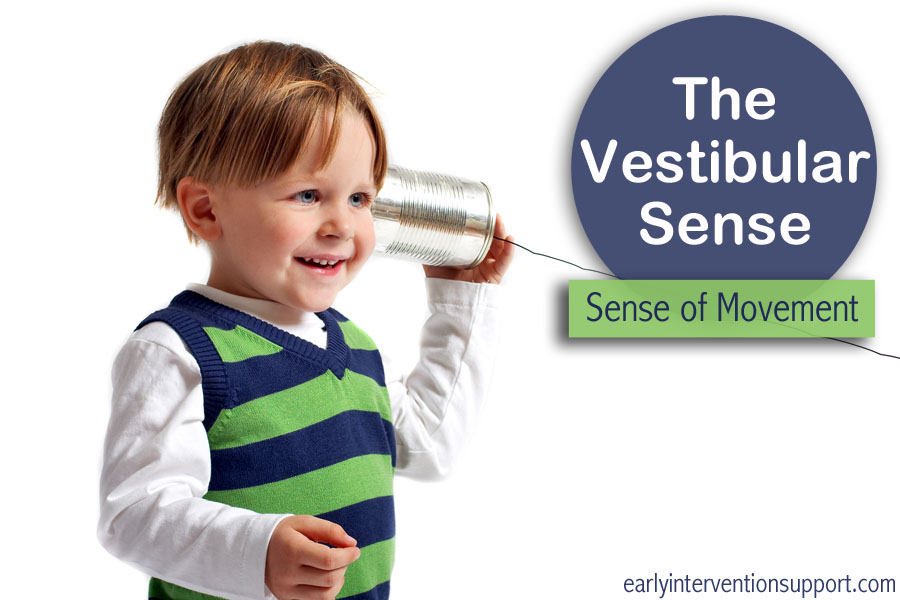The vestibular sense is one of our seven senses. Many of us learned in school about the five senses (taste, touch, sound, sight, and smell). The two other senses that aren’t talked about as much but are vital to our functioning in every day life are the vestibular sense (the sense of movement) and the proprioceptive sense (the sense of pressure).
Vestibular or movement information is processed by the vestibular system. The vestibular system helps us understand where our head and body are in space. The parts of the vestibular system are located in the inner ear. The two main parts of the vestibular system are the semi-circular canals (which process rotational movements) and the otoliths (which process linear, or straight line movements). The vestibular system closely interacts with some of the other senses to help better process information that we receive from our environment and from within our own bodies, including the visual and the auditory senses. Therefore, not only is the vestibular system involved in things such as balance, coordinating movements and the development of muscle tone, it is also important in maintaining a stable visual image, maintaining attention, and some parts of language development through its interaction with our senses of sight and sound. Problems with vestibular functioning are at times found in children with delayed motor skills, perceptual or attentional problems, learning disabilities, emotional problems, language disorders and autism. Listed below are some characteristics that would suggest poor vestibular processing, as identified by Mary J. Kawar MS, OTR, and Sheilia M. Frick OTR:
- Poor Balance
- Being over or under active
- Feeling “lost in space”
- Demonstrating an irregular cadence in walk
- Dislikes being in the dark (our visual system can compensate for vestibular deficits)
- Being hyper-vigilant visually
- Eye/head incoordination
- Ocular-motor control issues
- Poor tolerance of visual motion
- Avoids change and dynamic environments
- Fear of moving on unstable surfaces or being moved
- Poor organization (some cognitive processing disorganization)
- Emotionally unstable
Some children may be over or under responsive to vestibular or movement input. For example, a child that is over responsive to vestibular input may dislike playground equipment, prefer sedentary tasks, be afraid of heights (even small heights such as a curb), or be afraid of being tipped upside down. On the other hand, a child that is under responsive to vestibular input may seem to be in constant motion, may be an excessive thrill seeker or be able to spin for long periods without seeming to get dizzy.
Some things that may contribute to vestibular dysfunction include:
- Ear infections
- Allergies
- High fever
- Head trauma
- Sedentary Lifestyle
This is a very brief overview of vestibular processing issues and is not all inclusive. If you feel that your child may be displaying some problems with vestibular functioning, you can seek out an evaluation by an occupational therapist trained in treating children with sensory processing disorders.
By Mary Ann Dias, MOTR/L
Reference:
Kawar, Mary J. MS, OTR/L, Shelia M. Frick OTR, and Ron Frick. Astronaut Training: A Sound Activated Vestibular-Visual Protocol. Vital Links: Madison, WI, 2005. Print.

